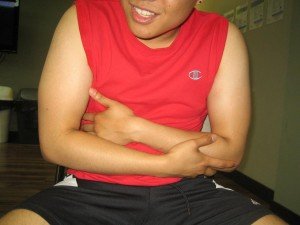Traveller’s diarrhea is a prevalent health issue among those who travel to developing countries. The high-risk areas for this condition include developing countries in Asia, Africa, Middle East and Latin America.
What are the causes?
Traveller’s diarrhea is typically triggered by an infection due to bacteria. The strains such as Escherichia coli, Shigella and Campylobacter are the usual causes. These bacteria are usually present in water contaminated by animal or human feces. Even water used for drinking, washing food or irrigation can also be affected. Once an individual drinks water or eats contaminated food, he/she can end up with diarrhea.
The usual sources of bacteria that causes diarrhea include contaminated food, poorly cooked or raw foods and contaminated water.
Indications of traveller’s diarrhea

Traveller’s diarrhea can range from mild to severe. Many individuals who develop the condition suffer from symptoms in the initial 2 weeks and often within 2-3 days of arriving home.
- Diarrhea
- Stomach cramps
- Mild to severe dehydration
- Generalized lack of energy
- Nausea and vomiting
- Fever
- Stools with mucus or blood
Treatment
The treatment for the condition involves drinking more fluids to prevent dehydration, over-the-counter medications and even antibiotics and intravenous fluids in some cases.
- Allow the stomach to rest. Avoid eating for several hours or until feeling better.
- Take small, frequent sips of boiled or bottled water or a rehydration beverage as well as small bites of salty crackers.
- Start a simple diet comprised of bland foods such as rice, crackers, potatoes, bread or bananas to slow down the diarrhea. Once the diarrhea has settled, the individual can eat a regular diet again.
Preventive measures
The ideal way to prevent the condition is to avoid water or food that might be contaminated. Remember that if a food is not boiled, peeled or well-cooked, it should be avoided. Even raw seafood and dairy products are high-risk foods for contamination. Foods that are dry such as bread or fruits that you can peel are usually safe to eat.
It is also recommended to avoid local water when travelling. The beverages that are safe to drink include:
- Bottled beer and wine
- Coffee and tea if prepared with boiled water
- Carbonated bottled water or sodas
Proper hand washing is also vital in preventing the spread of disease. Washing using treated water or alcohol wipes to disinfect the hands can help reduce the risk of acquiring the disease.
